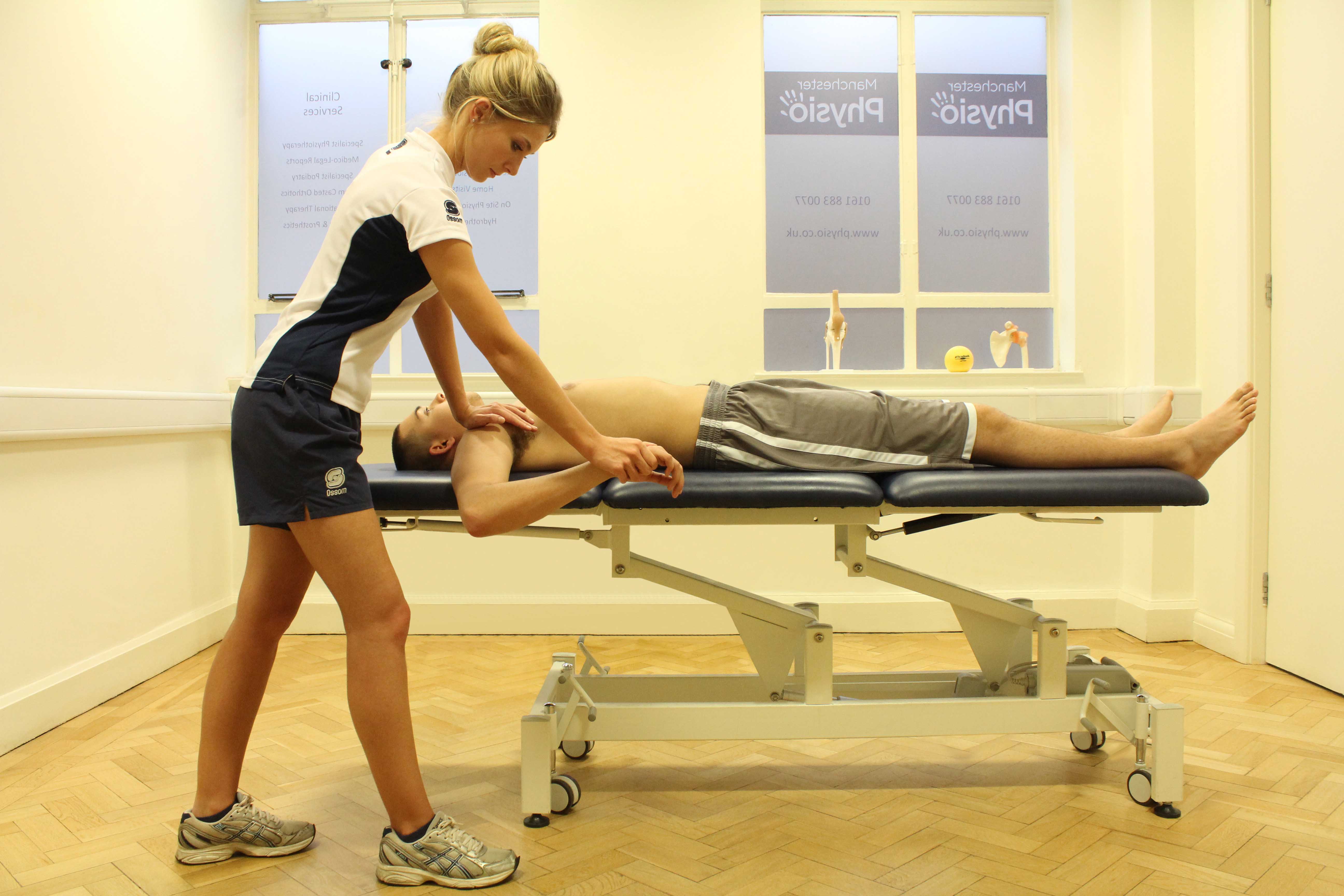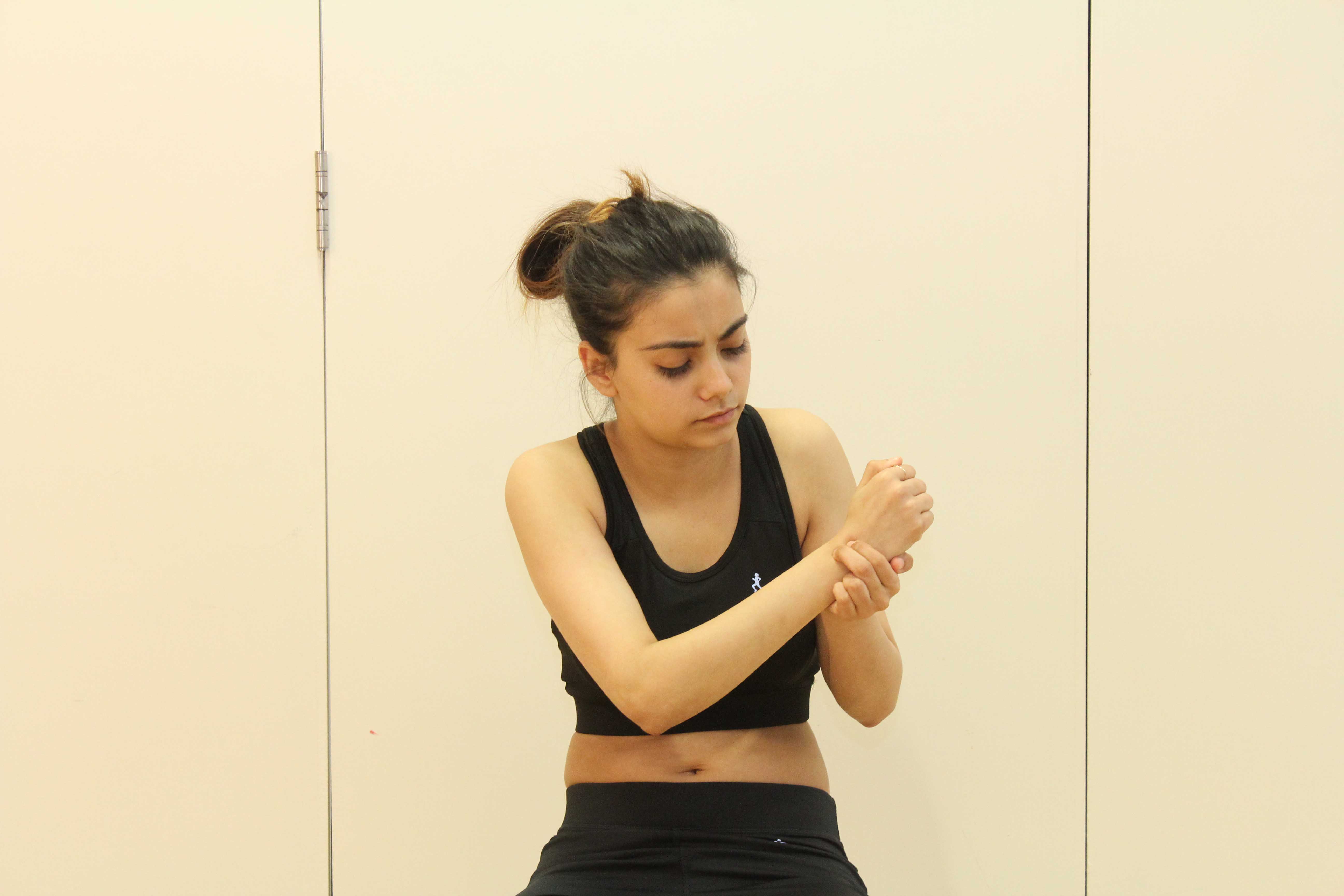What is a finger hyperextension injury?
A hyperextension injury of the finger occurs when one of the joints in the finger goes beyond its normal range of movement (hyperextends). Physiotherapy is important following a finger hyperextension injury.
What can cause a finger hyperextension injury?
Hyperextension of the finger usually occurs at the knuckle joint (MCP) or at the tip of the finger (mallet finger). This often occurs from catching a fast paced ball and is therefore common in cricketers, goalkeepers and basketball players. It can also be caused by landing on an outstretched hand from a heavy fall.
 Above: Examination of finger hyperextension injury by experienced physiotherapist
Above: Examination of finger hyperextension injury by experienced physiotherapistWhat are the symptoms of finger hyperextension injury?
Sudden, intense pain will be experienced if you have a hyperextension injury. You mind find it difficult to move the injured finger because of pain or if other structures have been damaged. There may be a lump or break in the skin if you have fractured a bone and you will notice swelling in the area. If blood vessels have been damaged, there will be signs of bleeding and bruising may be noticed shortly after. Other symptoms may include:
What should I do if I have a finger hyperextension injury?
Although a finger hyperextension injury can be treated conservatively (non-surgically), it is important that you go to your nearest hospital to have an X-ray to check if any bones are broken. They will be able to give you a clear diagnosis of your injury and tell you the best way for it to be treated. Your finger may be splinted to allow it to heal effectively. You can begin your physiotherapy programme immediately and even with your finger in a splint, other joints and muscles should be kept mobile.
What shouldn’t I do if I have a finger hyperextension injury?
Do not avoid getting professional help for your finger hyperextension injury. Even if the injury is only minor, it is important that you receive treatment as soon as possible to prevent any other complications. You should try not to move finger until you know exactly what the problem is. You should also avoid activities that will increase blood to the area including massage, hot showers and heat bath. Alcohol can also increase blood flow and this should therefore be avoided for the first 48 hours following your injury.
 Above: Hyperextension injuries are common in racket based sports. Book in to see one of our physiotherapists if you require treatment.
Above: Hyperextension injuries are common in racket based sports. Book in to see one of our physiotherapists if you require treatment.Physiotherapy for a finger hyperextension injury?
As soon as you have received an accurate diagnosis and treatment plan from your doctor or hospital, you can begin a physiotherapy programme. Your physiotherapist may splint your finger for up to 8 weeks to avoid any further damage to the area. Ice and compression may be used to reduce any swelling around the fingers and hand. Electrotherapy techniques such as ultrasound can be part of the treatment to facilitate healing and strengthening and stretching exercises will be provided to help return to your normal function. Other treatments include:
- Wax therapy
- Manipulation / Mobilisation
- Soft Tissue Treatment
- Taping
Can a finger hyperextension injury have any long-term effects?
If the finger hyperextension injury is not treated as soon as possible, there is a greater risk of long term complications including stiffness and contractures. If other structures such as nerves ligaments are damaged, there will be a longer recovery time. Physiotherapy will help optimise your recovery and return you to a normal active lifestyle as soon as possible.
To arrange a physiotherapy appointment call Physio.co.uk on 0330 088 7800 or book online.

 0330 088 7800
0330 088 7800


































